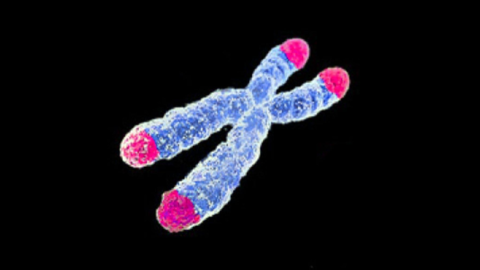Scientists extend mice lifespan 12% by tweaking telomeres

AJC1
- Using specially cultivated embryonic stem cells, scientists generated mice whose cells had extra-long telomeres.
- Telomeres are stretches of DNA at the ends of chromosomes that help protect the genetic information inside.
- Lengthening telomeres in embryonic stem cells could pave the way toward slowing aging without genetic modification.
Scientists successfully extended the average lifespan of mice by breeding them using embryonic stem cells with extra-long telomeres. The findings are significant because the researchers managed to extend lifespan without genetic modification, and they also shed light on the aging process and techniques that might someday slow it.
The study — published October 17 in Nature Communications — focuses on telomeres, which are stretches of DNA found at the end of chromosomes.
Because telomeres protect the genetic material inside chromosomes, they’ve been likened to the plastic tips on the ends of shoelaces. But telomeres have also been compared to bomb fuses, or “molecular clocks,” because they become shorter each time a cell divides, eventually shrinking so much that the cell dies or stops dividing. This shortening of our telomeres is associated with aging, cancer, and death.
Biohacking: Why I’ll live to be 180 years old
“Telomere shortening is considered one of the hallmarks of aging as short telomeres are sufficient to cause organismal aging and decreased lifespan,” the researchers wrote. “Telomere length is determined genetically and both average telomere length and the rate of telomere shortening varies between species. In this regard, humans are born with shorter telomeres than mice, but mice telomeres shorten 100-times faster than humans.”
For years, scientists have been exploring how lengthening telomeres might help stave off disease and aging in animals, and, perhaps someday, in humans. But these attempts have all involved genetic modification. In the new study, a team of researchers at the Spanish National Cancer Research Center left induced stem cells to multiply in a petri dish, a process which eventually results in cells that have extra-long telomeres, as researchers first discovered in 2009.
Using these specially cultivated embryonic stem cells, the team generated mice with extra-long telomeres. Compared to a control group, these mice experienced “significant increase of 12.74 percent in median longevity”, showed no cognitive defects and were less likely to develop cancer and obesity.
“This finding supports the idea that, when it comes to determining longevity, genes are not the only thing to consider,” says molecular biologist Maria Blasco, from the Spanish National Cancer Research Centre (CNIO). “There is margin for extending life without altering the genes.”
Is lengthening telomeres the secret to slowing aging in humans?
Shorter telomeres are linked to a shorter lifespan in humans. And although we’re unlikely to see any experiments involving that are similar to the recent study, there are some steps you can take to lengthen your telomeres and increase your chances at a longer life. The main step: endurance exercise.
A 2018 study published in the European Heart Journal found that telomerase activity spikes in people who regularly do endurance exercises, defined as 45 minutes of continuous running. Interestingly, this effect was not observed in people who lifted weights or walked for 45 minutes. The results echoed those of a similar 2017 study, which found that people who ran regularly appeared to be biologically younger than those who didn’t. But it takes some effort.
“If you want to see a real difference in slowing your biological aging, it appears that a little exercise won’t cut it,” study author Larry Tucker told Science Daily. “You have to work out regularly at high levels.”





